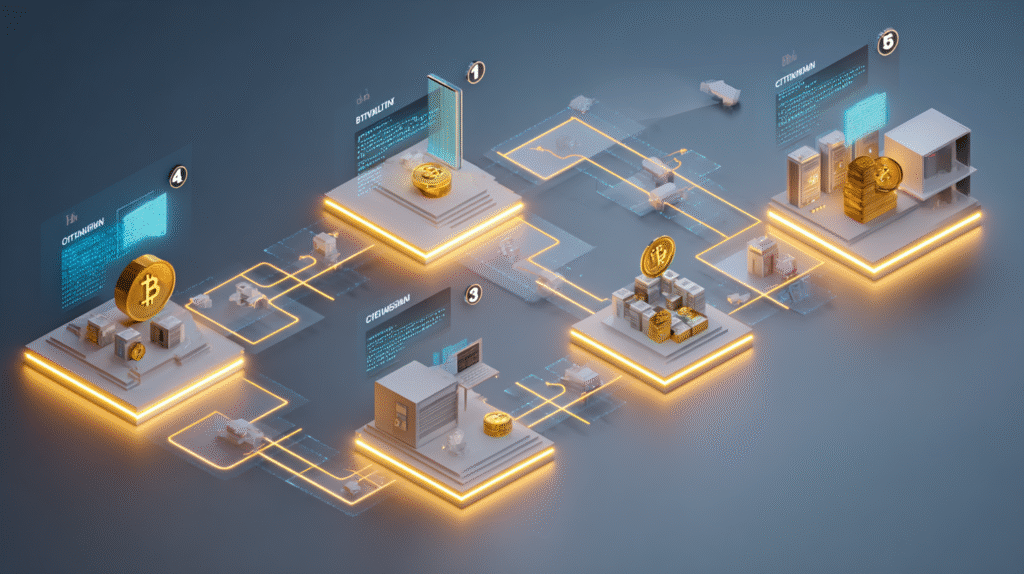How Cryptocurrency Works: Beginner’s Guide to Digital Money
Cryptocurrency may seem complex at first, but its underlying mechanism is straightforward once you break it down. This article explains how cryptocurrencies function step by step — from blockchain to wallets and exchanges. By the end, you’ll understand the essentials of how digital money works and how to interact with it safely.
Before you dive in, check out Introduction to Crypto for the basics and Crypto Trading for Beginners for trading knowledge.

1. The Role of Blockchain
Blockchain is the foundation of cryptocurrency. It’s a distributed ledger where all transactions are recorded. Each block contains a group of transactions, linked to the previous one, forming a chain. This makes the data nearly impossible to alter retroactively.
- Decentralization: No single authority controls it.
- Transparency: Anyone can verify transactions.
- Security: Cryptographic hashing prevents tampering.
2. Wallets: Storing and Managing Crypto
To use cryptocurrencies, you need a wallet. A wallet stores your private and public keys, allowing you to send and receive funds.
- Hot wallets: Online (software) wallets like MetaMask, Trust Wallet.
- Cold wallets: Offline (hardware) wallets like Ledger or Trezor for maximum security.
3. How Transactions Work
A cryptocurrency transaction follows these steps:
- You enter a recipient’s wallet address and amount.
- The transaction is signed with your private key.
- It is broadcast to the network and verified by nodes.
- Once validated, it’s added to a new block on the blockchain.
This process makes transactions irreversible, secure, and transparent.

4. Exchanges: Where Crypto Is Traded
Exchanges are platforms where you can buy, sell, and trade cryptocurrencies. Centralized exchanges like Binance, Bybit, and OKX offer user-friendly access for beginners. Decentralized exchanges (DEXs) like Uniswap allow peer-to-peer swaps without intermediaries.
5. Mining & Consensus Mechanisms
Cryptocurrency networks rely on consensus mechanisms to validate transactions:
- Proof of Work (PoW): Used by Bitcoin; miners solve puzzles to secure the network.
- Proof of Stake (PoS): Used by Ethereum; validators stake coins to confirm blocks.
Both systems keep the blockchain secure without centralized control.
6. Security in Cryptocurrency
Security is essential when dealing with crypto:
- Enable 2FA on exchanges.
- Never share your private keys.
- Store large funds in hardware wallets.
- Beware of phishing attacks and fake projects.
7. Getting Started as a Beginner
- Open an account on a reputable exchange (Binance, Bybit, or OKX).
- Set up a crypto wallet.
- Buy a small amount of BTC or ETH to practice.
- Learn trading basics in our Crypto Trading for Beginners guide.
8. FAQ: How Cryptocurrency Works
Is cryptocurrency anonymous?
Not exactly. Transactions are pseudonymous: addresses don’t reveal personal identity, but they are publicly traceable.
How long does a crypto transaction take?
Bitcoin transactions may take 10+ minutes, while Ethereum or Solana can confirm in seconds.
Can I reverse a crypto transaction?
No. Once confirmed on the blockchain, a transaction cannot be reversed.
Do I need a wallet to trade?
Yes. Even when using exchanges, you technically interact through wallet infrastructure.
